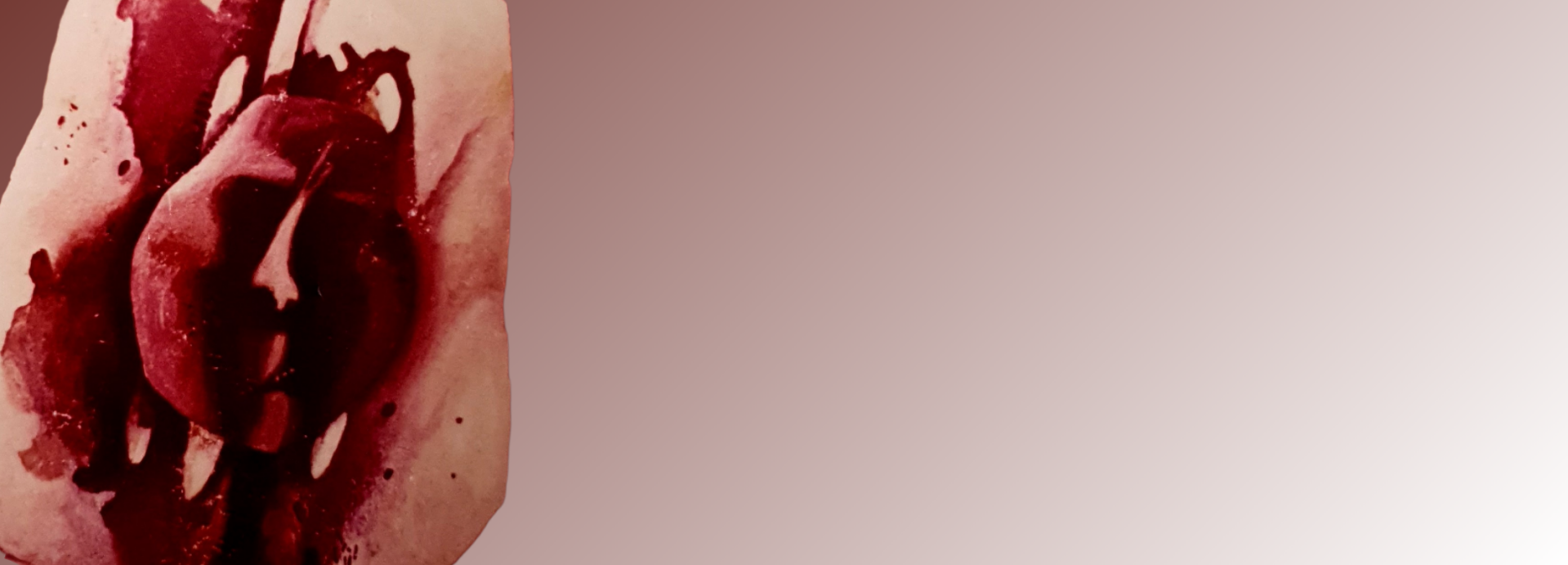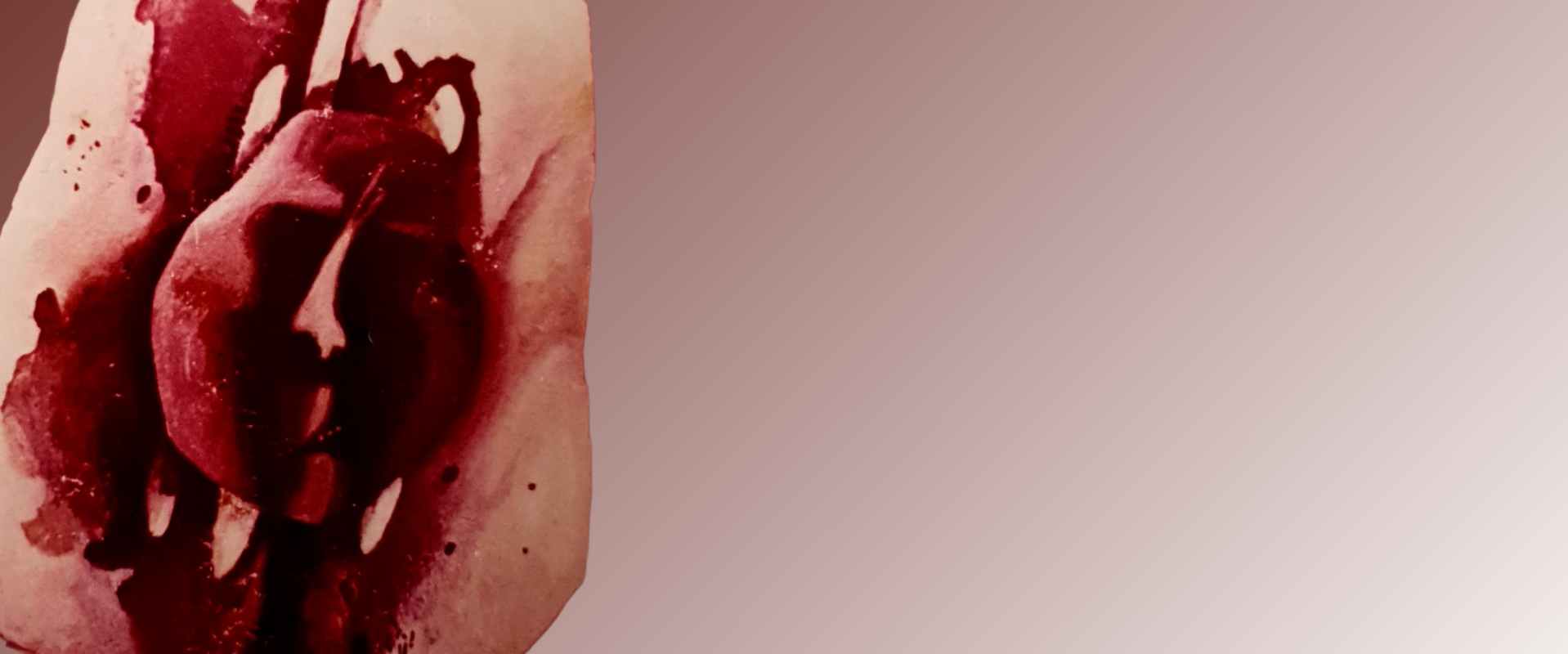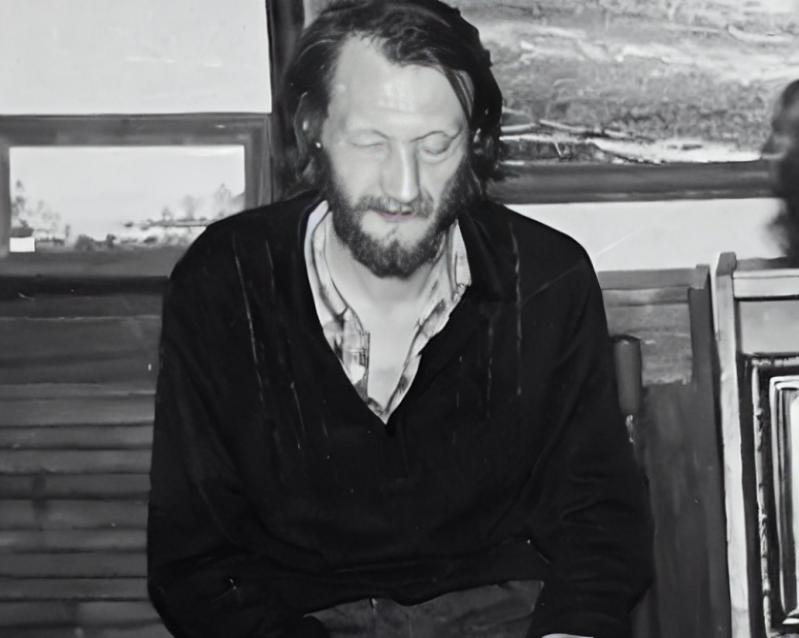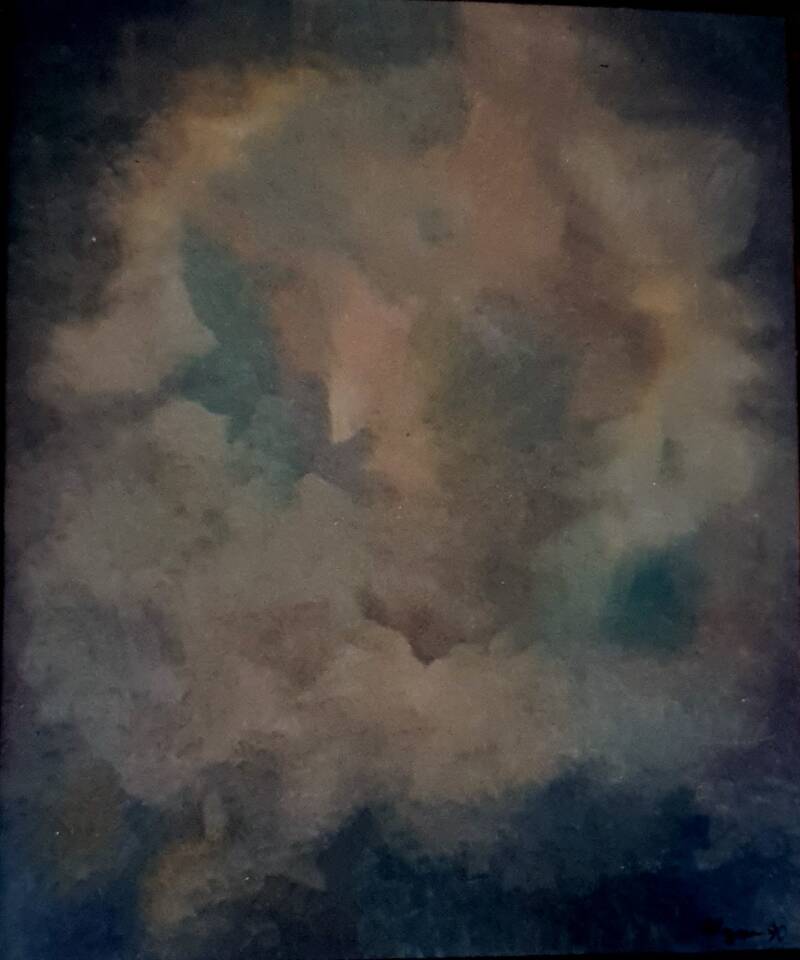
ALEXANDER KUTAYEV

Alexander Kutayev
August 25, 1956
1974 „Avant-garde Exhibition“ Leningrad – Moskow became known wordwide as Bulldozer-Exhibition
1975 – 1979 Studied at the Serov Art Academy in Leningrad
(Exhibitions in private apartments in Russia - often under life- threatening conditions for all involved)
1979 – 1989 Theater painter at the Syktyvkar Music Theater
1974 "Avant-garde Exhibition" Leningrad - Moscow
1984 Participant in the exhibition for experimental art "Tell" at the Leningrad Youth Palace; strictest control by the authorities for visitors and artists: the exhibition was repeatedly temporarily closed.
Before 1986, it was nearly impossible to exhibit Kutayev's paintings or make them accessible to the public because Kutayev was considered a persona non grata in the Soviet Union.
1986 Founding member of the group: "Union of Free and Independent Painters of Leningrad" (ID Number "2")
1988 Exhibition at the "Nevsky 20" Gallery in Leningrad
1989 Exhibition participant "Art - Music - Ballet" Small Opera Theater in Leningrad
Exhibition at the Journalists' Club, Leningrad
"Lyteyny 56" Gallery, Leningrad
Founder of the group "Dream Figures" with the aim: joint exhibitions to come closer artistically and to reflect the real world while also highlighting the boundaries to fiction.
1992 "Biennale of Contemporary Art" St. Petersburg
"Dream Worlds II" Marble Palace, St. Petersburg
"Contemporary Painters from St. Petersburg" Zermatt/Switzerland
1992 "Biennale" St. Petersburg Lenexpo, Exhibition Halls
1992/93 December - January Russian Museum Exhibition of the "Art
Collegium" in cooperation with the Russian Museum, St. Petersburg
1993 Group exhibition in the "Manege" St. Petersburg
Painting from St. Petersburg Locarno/Switzerland
Contemporary Russian Avant-garde Chiasso/Switzerland
Significant Russian Artists Zermatt/Switzerland
1994 New Year's Exhibition "Hof Jünger" Contemporary Russian Avant- garde Bottrop-Kirchhellen/Germany
Contemporary Russian Painting Arnsberg/Germany
Significant Contemporary Russian Artists Zermatt/Switzerland
Contemporary Russian Painting Heitersheim/Germany
Christmas Exhibition. Gallery of the Artists' Union St. Petersburg
1995 Kurhaus Gallery. Bad Driburg/Germany
Christmas Exhibition. Kutayev Studio St. Petersburg
1996 New Year's Exhibition "Hof Jünger". Bottrop-Kirchhellen


Kutayev Speaks:
In the summer of 1974, I was a co-organizer of an exhibition at the GAS Palace in Leningrad. (GAS: a pseudonym for a revolutionary against the government before 1917.) We aimed to revive the values of the Russian avant-garde. The exhibition was explicitly and personally approved by Leonid Brezhnev.
However, during the exhibition, our art was completely banned, and the exhibition was closed. KGB agents brutally dispersed the crowds who were chanting for the reopening, and the Soviet press portrayed us as provocateurs.
We, all 12 participating artists, were then placed under intensified, constant surveillance by the KGB.
In September 1974, the exhibition was "relocated" by the authorities to Moscow, meaning it was state-sponsored and supported, but in Moscow itself, it was neither allowed nor banned.
In Moscow, we were already 80 artists, including Zhelkov, Gavrilchik, Shagin, Lev Einbinder, and many others, all of whom, except for me, eventually emigrated. In Moscow, there were no opportunities for us to exhibit, so we moved to Sokolniki Park. In just a few hours, many foreign visitors (diplomats, journalists) who had been informed through word of mouth came to the exhibition, which would later become known worldwide as the "Bulldozer Exhibition." The mayor of Moscow, Grishin, suddenly got "cold feet" due to the overwhelming response and hastily declared the area a construction site, immediately sending bulldozers for the suddenly commencing construction work.
The Western press reacted positively to euphorically. However, for us, it was dangerous to read the foreign press, so we learned much of the news from conversations with our foreign friends. (Note: It was only since 1989 that it became possible to use or even purchase a typewriter without having to register your passport number; the same applied to photocopies.)
From 1979, I worked as a theater painter and thus had the opportunity to occasionally display some of my paintings - seemingly by chance. These "permanent exhibitions" also led to constant trouble and reprisals from the KGB. However, since I never lost my job during this "game," my friends soon began to see me as a KGB agent and avoided me.
In the 1970s, 25 of my paintings were smuggled into the USA, thereby escaping the KGB's grasp.
In 1984, I exhibited at the "Nevsky 20" Gallery, and a Dutch art patron took notice of me. He bought the painting "Red Cat with Fish" from me for what was then an unimaginable sum. Since then, the regime has been more cautious with me.
However, even after Perestroika and Glasnost, things are not completely trouble-free. In 1991 and 1992, several of my paintings were still confiscated at customs. But Russia is my homeland, which I love and will not leave. Yet, like a lover, my country must also accept constructive criticism. Not everything is purely good or purely bad. I am optimistic and see a good and interesting future for my country.
Edited by: Ursula Leidens
(All rights reserved)
The Way Life Goes...
a story of Kutayev's life, told in his own words
When I am asked to tell or write something about myself, I do so very reluctantly. In the Gospel, such a situation is described as follows: If you take something in hand and do not take it seriously, then you are not worthy of what you are doing.
But sooner or later, it is good to do something. And so, I also want to do something and look back. But such is life.
Life consists of encounters, often very fleeting ones. For example, during a train ride. You meet by chance, have a pleasant conversation, and when you part ways, the acquaintance you just made is soon forgotten.
What can I say about encounters in my childhood?
Actually, nothing at all. - But perhaps everything.
But do I even want to stir up childhood memories?
At first, it was tight, very tight—and then I was born: under the sign of Virgo on August 25th—in the year of the Red Monkey, 1956. I was born in the enchanting St. Petersburg, or more precisely, in the "Fox Nose" district (a suburb of St. Petersburg).
And then it became tight again, very tight.

Hospital.
Two years of only boiled milk with Postschalm. (Due to a lack of milk, it was diluted with water. The water contained a lot of rust and other impurities due to bad pipes.) To this day, I cannot tolerate boiled milk. And I always tried to make semolina porridge disappear into some flowerpots... And only tight and empty corridors... Then an apartment with many residents—again very tight.
My mother always said: Go outside and play, and so the street became my home. More precisely, a few blocks with green spaces in between. There I could walk and think for hours. To this day, walking remains my passion.
My school years.
The first two years I attended an elementary school, but due to our financial situation, I had to go to a boarding school. (There, the school uniform and everything else was paid for by the state.) But as quickly became apparent, there were too few boarding schools and too many students. Only one boarding school was willing to take me, and this one was accessible only to "idiots" (special school). But to officially be considered an "idiot," you only had to collect a few documents (medical certificates), and these medical "proofs" were not hard to obtain.
To my surprise, I discovered that there were fewer "idiots" at this school than I had assumed. Perhaps even fewer than at a regular school. For example, three of my classmates were such "idiots" that they later attended university. And my school friend was a boxing champion and is now a literature teacher.
All in all, they were strange characters.
I was not particularly good in school. History, chemistry, and art class were all that interested me. I hated mathematics. I simply could not understand it. I was always told: You must learn, or you will be cheated in stores. Yes, but are there any cheaters in our country at all? Until 4th grade, I could not memorize the multiplication table. I simply could not understand why when it was printed on the back of every notebook.
Well, I was just an "idiot." (Back then, the multiplication table was always printed on the last cover page of school notebooks.)
Technology never interested me, but I loved cars. How could I not love those magnificent vehicles like the "Pobeda," "Moskvitch," or "Volga." Those wonderful inflated forms—handles and steering wheels made of bone, but with seats on which you could recline and dream. These forms later often appeared in my paintings.
I had another love—the languages, for example, German. Although the teachers changed two to three times a year, and everything was very complicated, I did learn to read and write a little in this beautiful language. However, in practice, it was of no use. Everything was in vain. Today, I understand that foreign language education was deliberately organized so that it could not be used. Otherwise, one could have listened to the radio or even read books in a foreign language. My best friends, therefore, were the fish. They lived in the aquarium, did not disturb the parents, and were cheap. I loved my fish very much, and they still appear in my works today.
From the 9th grade, I attended the Prof. Gaza Art School, where the first official avant-garde exhibition took place in 1974. So, one morning in 1974, I came to school, and someone told me that an exhibition was going to take place here. Some paintings were already hanging on the walls, others were still on the floor. And as I walked through the rooms, someone told me that I should at least take off my coat. (In Russian museums and galleries, it is considered very improper not to check your coat.) I agreed. I could not interpret the paintings I saw. Was this "art" or "avant-garde"? I was amazed by what I saw; it was all foreign to me. Only one work impressed me, a small watercolor sketch. Today, I can say with a smile: Sasha, you always had good taste, because it was a work by Nikolai Alekseyevich Sashin. Later, I became his student in graphics, and we have remained friends to this day. Sashin is a great artist of our time, and others think the same as I do.

Well, and then the exhibition opened... Silence... The first four days, there were no special incidents. But then the KGB became impatient. Why were there no disturbances and demonstrations by visitors against this art? Yes, there were not even any organized disturbances by the KGB itself. And then the building was surrounded. After so much "effort," people now flocked to the site. - The Soviet population is just like that: If there is a line somewhere, whether you know what it is for or need it or not—stand in line. If there is a sign saying "No entry," at least take a look inside. And if even the police are visible somewhere, then there must be something highly interesting.
I could not believe my eyes—I had never seen such a long line that seemed to have no end. The foyer was so crowded that you could not move. The painter Petroschenko tried to organize the chaos, but it was impossible. No one knew whether to meet the police with hatred or to be grateful for the "advertisement." The art studio was now famous. And this is how I made the acquaintance of many artists, but also with our enclosed cultural society.
In Leningrad, it was whispered that almost at the same time in Moscow, an exhibition for "unknown artists" took place. I did not know the organizers Gleser and Rabin personally, but I had heard a lot about them (this was the so-called "Bulldozer Exhibition," which caused a worldwide sensation). I had already seen paintings by them in Leningrad at a so-called "apartment exhibition" (Rabin, Zhelkov, and others). I did not see the exhibition in Moscow anymore because I arrived there too late. But I was still able to talk to many painters. We "hung noodles on each other's ears" (bragged) about our courage, progressiveness, and modernity. I can no longer remember many details today. Everything was so unreal, chaotic, and wild. Many legends have formed around these two exhibitions since then. My personal comparison of these two exhibitions is as follows: In Moscow, 80% politics and 20% art, in Leningrad, 80% art and 20% politics.
A year later, the second exhibition took place at our school. Now the authorities were smarter. Barriers were set up everywhere, and visitors were already lining up in the evening to be able to visit the exhibition in the morning. Among other things, a reader's letter from a locksmith was printed in the newspaper: He had waited for hours only to see such "junk." I knew better: This scoundrel had never visited the exhibition.
In 1975, I transferred to the Serov Art School, named after the president of the Academy of Arts during the Stalin era. The prestige of this school was equivalent to that of the Academy of Fine Arts, and there was relative freedom. I studied together with Viktor Tsoi, the famous Russian singer. Then the school was moved to Smolny and named after the scoundrel "Serov," who had once been the Commissioner for Art and Culture but should not be confused with the painter Serov. And then again, a move to a remote suburb of Leningrad, and far too late, it was given the name Roerich, the painter and director of the Imperial Society for the Encouragement of the Arts; under the last Tsar. But by then, our school had already been systematically destroyed. It was a difficult and complicated time, and I want to describe it quite drastically: If your paintings are flattened by a tractor, you can deal with it. But if your "brother painter" suppresses you and is ready to hit you in the face at any moment, it is cruel and incomprehensible.
Now, one can laugh about it easily.
Back then, I received 30 rubles a month as state support. Too much to live on and too little to die. The teachers received the same "salary," so it is easy to imagine the relations between teachers and students. There was no trust, and performance was assessed as follows: Prove what you can do, and maybe I will acknowledge it.
And in 1979, I finished my studies and moved to Syktyvkar, where I worked at the local theater. Here I realized
: Everything I had learned so far was of no use. No painter can claim to be a master—whoever does is dead. I met Igor Borisovich Grinevich, who truly made me a painter. Sashin gave me professionalism, and Grinevich showed me the way to art. I worked with both of them for three years at the theater. But over the years, we lost touch.
In the 1980s, I lost all my friends because, at the theater, I had the opportunity to constantly display some of my paintings—seemingly placed by chance. These "permanent exhibitions" also led to constant trouble with the KGB. However, since I never lost my job during this "game," I was soon considered a KGB agent by my friends and avoided. In the 1980s, 25 of my paintings were smuggled into the USA, thus escaping the KGB's reach. Then a Dutch art patron noticed me and bought my painting "Red Cat with Fish" for what was then an almost unimaginably high sum.... Since then, the regime has treated me with more caution.
Of course, there were also many who wanted to go to the West and did so. Restlessly, I followed the fame of Zhelkov (now in the USA), Shemerkin (now in the USA), and Yuri Zharikh (now in France). They tried to lure me into working with their groups, but I remained alone. Then I saw how they collectively went into nothingness. One hanged himself in the West, others became alcoholics. Thus, the flames of life have destroyed many works that contained an entire painter's life. I have no fear for my works, even if many only view them fleetingly. Fate has tossed me back and forth. For example, I worked for two years in heating basements and met writers, musicians, philosophers, painters, and others there, as they had all fled there to work in peace. It was a time when you would talk to street sweepers and suddenly realize you had a genius in front of you. On the one hand, this situation was a societal decline, but on the other hand, very useful. No one could fire you, that is, of course, only if you were not a street sweeper in the Kremlin. On the other hand, you had free time, a lot of free time, and that was as essential for painting as air for breathing. But that was my world for those two years, and I loved my heating basement.
There were four of us there. Two persecuted Christians, one of whom called himself a photographer, the other a carpenter, a speculator, and me. Each lived their life in this "basement free time." I practically lived in that basement, painted, read, and invited friends there. I could also stare at the fires in the heating boilers for long periods. Fire is like a flower to me, but these "fire flowers" cannot be painted. One of my "basement friends" eventually became a priest, the other an icon painter at the Alexander Nevsky Monastery, the speculator is in prison, and I paint. Now our paintings are being "discovered" by the West, and thus also we "insignificant" painters. We were surprised that although we lived behind the "Iron Curtain," we knew much more about Western artists than the other way around. That is why I got used to collecting all information like little crumbs from an early age and reading a lot between the lines. We were sad that despite the fantastic opportunities the West offered, it seemed that Western artists had run out of steam. Many Western collectors felt the same way, and they began buying our paintings and, if necessary, smuggling them to the West.
And then came the time when the government said: Save yourself if you can, the time of Perestroika and Glasnost. We painters were allowed to sell our paintings on Nevsky Prospect. The first 1.5 years were simply fantastic. There was much to see, and one could buy paintings for a few kopecks that are worth thousands today. But the market conditions and the mafia devoured everything. I wanted to try it out too. I stood on Nevsky all day—and sold nothing. It was almost evening, and I cursed the day. And as I looked sadly at the ground, suddenly two old, worn shoes were in front of me. I immediately thought of an alcoholic, so I didn't even lift my head. The shoes asked, how much? I grumbled: 300 rubles and didn't even know whether it was for one painting or all of them. Okay, the shoes replied, I'll take them all. Then I looked up. In front of me stood a handsome young man with a gold necklace. It was the famous emigrated Russian singer Krabelnikov (pop and schlager singer), who was on tour in Russia. As he took the paintings, the other painters came and said that my paintings had been too cheap. I was shocked and didn't know if I deserved praise or if someone had insulted me.
That was my lesson in capitalism.
Then I stopped working and lived off the sale of my paintings, something not every artist in the West can afford. I live by the motto: If there is money, I am extravagant, and if there is none, I am not sad either. At least now I have the opportunity to choose the galleries and exhibitions in Russia and the West. But money is gaining more and more control. And something else has become very difficult: gaining and establishing trust. The future has begun, and to cope with everything, you need time. But Russia is my homeland, which I love very much and will not leave. Yet, like a lover, my country must accept constructive criticism. Not everything is just good or just bad. I am an optimist and see a good and interesting future for my country.
Picasso says that he does not search, he finds. But I do not look down searchingly, I look around and find everything interesting.
St. Petersburg, July 1, 1993
Translation: Helena Bergen
Edited by: Ursula Leidens
(All rights reserved)
(Note: The additions in parentheses serve to aid understanding.)























